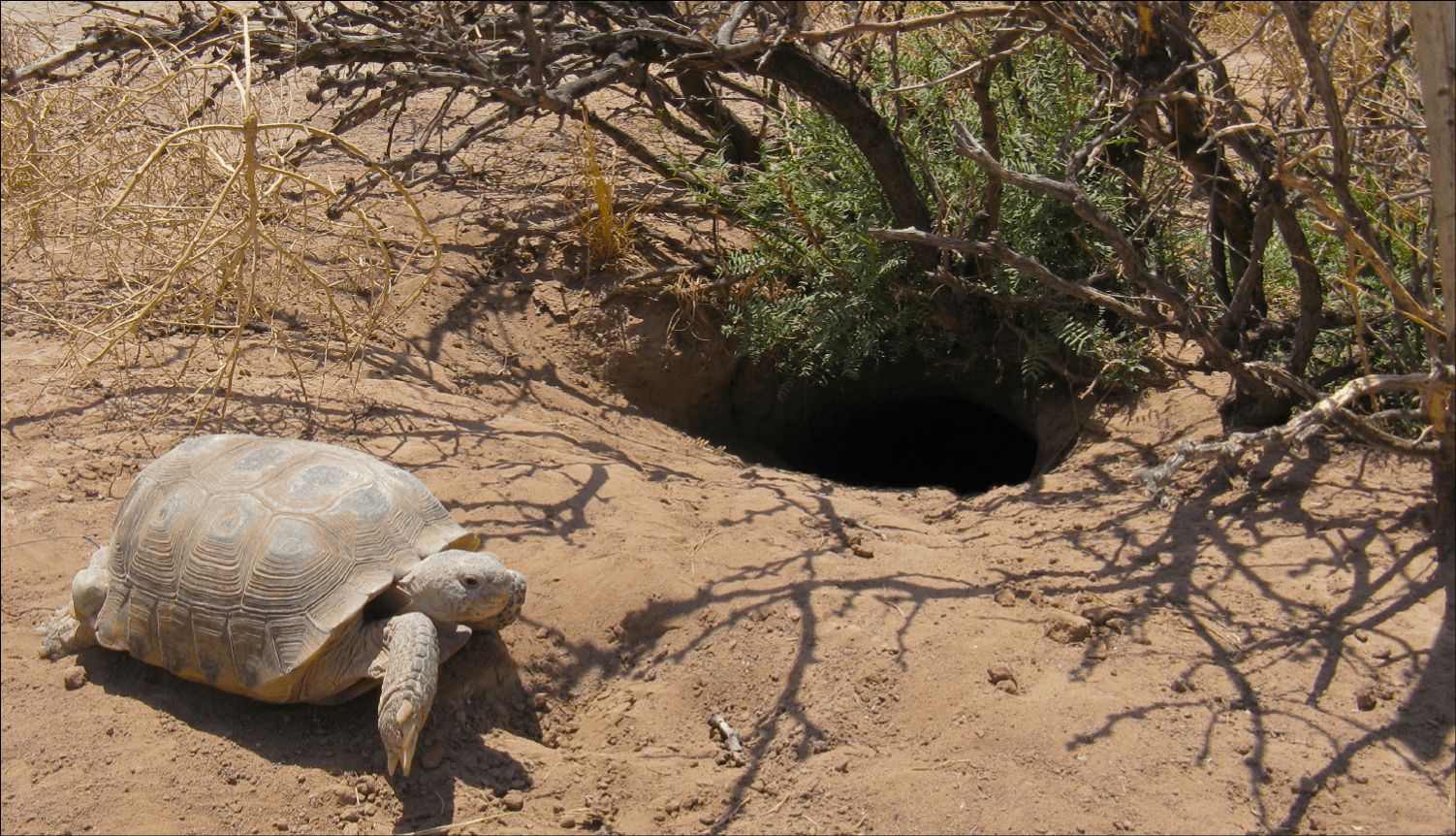
Species
Bolson tortoise (Gopherus flavomarginatus)
Principal Biologist(s)
Chris Wiese, Scott Hillard
Project Location
Armendaris Ranch, NM
Ladder Ranch, NM
Conservation Problem
Population decline and contraction of the bolson tortoise range due to climate change; habitat fragmentation, degradation and loss; and collection for food.
Conservation Status
Listed range-wide in the US as Federally endangered under the Endangered Species Act (1979)
Listed as Vulnerable on the IUCN Red List
Project Goals & Objectives
Our overall goal is to establish independent, free-living, minimally managed bolson tortoise populations in the northern portion of the Chihuahuan Desert, which constitutes their prehistoric range. To this end, we aim to increase bolson tortoise population size through robust captive breeding and head-start programs that protect juveniles until they reach a predator-resistant size. We also aim to release juvenile bolson tortoises on the Ladder and Armendaris Ranches to establish wild populations.
Project Background
The largest and rarest of the five North American tortoise species, the bolson tortoise is thought to have once lived throughout most of the Chihuahuan desert, but its current range is restricted to a small area in north central Mexico where the states of Durango, Chihuahua, and Coahuila meet. Due to a suite of political, social, economic, and personal safety issues, the current status of the bolson tortoise in the wild is largely unknown. The last population survey estimated fewer than 10,000 animals alive in the early 1980’s. However, continued habitat degradation and loss since then make it likely that this number has since decreased significantly. In an effort to prevent the extinction of the bolson tortoise, we are working towards establishing free-ranging bolson tortoise populations on the Ladder and Armendaris Ranches in New Mexico, which lie at the northern tip of the tortoise’s prehistoric range.
Our starting point for the northern Chihuahua bolson tortoise reintroduction project was a group of 30 bolson tortoises that were collected and bred over a period of nearly 40 years by a private individual from Arizona. Ms. Appleton’s collection was donated to TESF in 2006, and 26 adult (plus 7 hatchlings) tortoises were moved from Arizona to the Armendaris Ranch to serve as a captive breeding colony for our reintroduction program. Four tortoises (2 males, 2 females) were donated to the Living Desert Zoo and Gardens (LDZG, Carlsbad, New Mexico), where they are on exhibit. Successful breeding programs on the Armendaris and at the LDZG have hatched over 400 juvenile tortoises since 2006. Hatchlings and juveniles are being kept on native forage in outdoor, predator-proof enclosures until they are large enough to be released (about the size of the native box turtle, or ~110 mm shell length). Tortoise growth rates depend both on the weather and on forage availability. It typically takes between 3 and 7 years or more for a hatchling bolson tortoise to reach 110 mm.
With their powerful front legs, tortoises dig burrows in which they spend over 85% of their time. The burrows are an important part of a healthy desert ecosystem, as they provide shelter for a myriad other species, including mammals, birds, reptiles, and insects.
